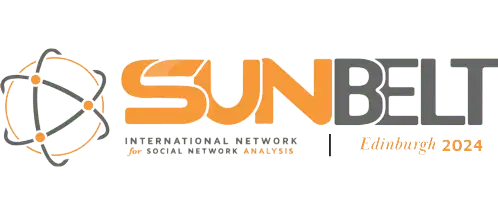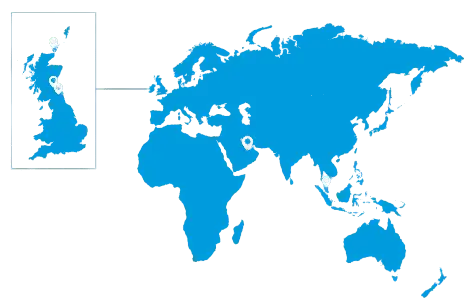In-person workshops
- Select title for full details, including co-presenters and workshop description.
- Each workshop is limited to 30 participants, unless otherwise stated in the description.
- Registration for in-person workshops will be available as you register for Sunbelt 2024.
- You must register for the main conference in order to register for in-person workshops.
Kariyushi Rao, Ty Hayes, Oana Vuculescu, Mads Kock Pedersen, Carsten Bergenholtz
Martina Morris
Michał Bojanowski, Lorien Jasny
Those wishing to use the R programming language for network analysis now have a plethora of choices when it comes to libraries. In this workshop, we survey the main packages used for network data management, analysis, and visualization. We will cover 1) importing network data (from actual files), 2) network objects and attributes, 3) computing basic descriptives (attribute distribution, mixing matrix, density, degrees, betweenness, closeness), and 4) visualization (layouts, node aesthetics). These will be done side by side for the different packages, as well as discussion of the strengths and weaknesses of each. We conclude with time for attendees to work either on toy datasets or with their own data with help from instructors. This workshop is a unification of workshops “Using R and ‘igraph’ for Social Network Analysis” and “Introduction to Social Network Analysis with R and statnet” that has been offered on Sunbelt and EUSN conferences since 2011. It will serve as an introduction for those wishing to take “Moving beyond descriptives”, “Using ‘igraph’ for SNA: advanced topics”, “An introduction to ERGM with Statnet”, or other Statnet-related workshops on the program.
Scott Duxbury, Jenna Wertsching
Exponential random graph models (ERGM) are widely used in the social sciences to examine determinants of graph structure. This 3-hour workshop will introduce attendees to mediation and moderation analysis in ERGM using the ergMargins package for R. The workshop will describe why ERGM coefficients cannot be compared between models and why coefficients for interactions—including node matching, node mixing, and other common measures of homophily and heterophily—cannot be interpreted without adjustment. Topics covered will include (1) mediation analysis, (2) moderation analysis, (3) mediation analysis when the mediator is an interaction, and (4) mediation analysis when the main effect is an interaction. We will review a range of special cases, including interactions involving both continuous and discrete variables, necessary conditions for a causal interpretation, and mediation analysis involving endogenous graph statistics. Attendees will come away from the workshop with a deeper understanding of inferential difficulties in ERGM and with knowledge on how to address each issue using ergMargins.
Pablo Galaso, Sergio Palomeque
Monday, 24th June PM Half Day
Michał Bojanowski, Pavel N. Krivitsky
This workshop provides an introduction to analyzing egocentrically sampled data with exponential-family random graph models (ERGMs) for statistical network analysis. It is a hands-on workshop demonstrating how to fit, diagnose and simulate both static and dynamic ERG models from such data, using the ergm.ego package, part of the integrated Statnet software collection in R. Topics covered in this session include:
Brennan Antone, Kyosuke Tanaka, Noshir Contractor
Interactive teaching methods help learners internalize key concepts about social networks and apply them in their social or professional lives. Interactive activities can introduce “network thinking” and connect it to real-world decisions. This 3-hour workshop will introduce five different interactive teaching exercises, provide instructional materials, and discuss their use. These exercises are designed for use in classes, or as stand-alone workshops for organizational or professional development. The first exercise, 6-DOS (Six Degrees of Separation), helps participants consider their network awareness and strategies to raise their awareness. The second exercise, RAD (Relational Analytics Dashboard), is a teaching case on how network-enabled people analytics can shape organizational decision-making. Third, MDT (My Dream Team) is a platform for helping participants assemble teams and make new connections. The fourth exercise, PNR (Personal Network Report), guides participants through reflecting on their own networks in a professional or academic context. Fifth, the ERGM Builder exercise is a teaching tool designed to help participants understand and reason about statistical models of networks. We will provide a live demonstration of each teaching exercise, as well as distribute slides/material and instructional guides for running each exercise. Additionally, we will discuss the role that interactive exercises can play as part of a larger social network curriculum.
Length of the workshop: 3 hours
Maximum number of attendees: 40
Martina Morris
James Hollway, Jael Tan
From infectious diseases to innovations, from memes to norms, networks regularly influence how outcomes are distributed. This workshop introduces the many tools available in the ‘manynet’ and ‘migraph’ packages in R for studying network diffusion or contagion. First, we look at the tools available for simulating various contagion processes, including simple and complex diffusion. We extend these models to a range of different compartment models, e.g. SEIRS, that can better represent more varied processes, and suggest how to evaluate the fit of these simulations with observed diffusions. Second, we look at tools for measuring, describing, or inferring aspects of these processes, from hazard rates to thresholds. We show how they can be used on observed diffusions too, so please bring data from any salient projects you are working on. Lastly, we will explore how, with the rest of the tools available in ‘manynet’ and ‘migraph’, we can identify points of intervention to accelerate or obstruct diffusion.
Because these procedures are based on ‘manynet’, they work with many different network formats and types, including ‘igraph’ and ‘network’ classes, as well as directed and multimodal data. manynet offers a single R package to assist researchers with making, manipulating, and mapping many types of networks and assist teachers with practical tutorials. Users can quickly and easily add, delete, reformat, transform, split and join, and visualise networks with sensible but flexible defaults in minimal code. Familiarity with R and RStudio is recommended.
Scott Duxbury
What network selection mechanisms generate unique network structures and topologies? What are the implications of those selection mechanisms for individuals nested in social networks? This 3-hour workshop will introduce attendees to recent statistical frameworks for micro-macro network analysis using the netmediate package for R. The workshop will describe (1) procedures for estimating, interpreting, and null hypothesis testing the effects of micro-level selection mechanisms on macro-level network structures, and (2) introduce recent statistical procedures for evaluating the indirect effects of micro-level network selection mechanisms on individual and group level outcomes (e.g., adolescent smoking behavior). Topics covered will include (1) micro-macro analysis when the interest is treating a specific network structure (e.g., segregation, transitivity) as the dependent variable and (2) identification of indirect network selection effects on individual and group outcomes. We will review necessary assumptions for each type of analysis and strategies for meeting those assumptions in observational network data. Attendees will come away from the workshop with a deeper understanding of statistical procedures for micro-macro network analysis and how these procedures can be used to address research questions that implicate indirect network selection effects using netmediate.
Monday, 24th June Full Day (with lunch break)
Raffaele Vacca
This workshop is an introduction to the R programming language and its tools to represent, manipulate, and analyze egocentric or personal network data. Topics include: introduction to ego-network research and data; introduction to data structures and network objects in R; visualizing ego-networks; calculating measures on ego-network composition and structure; converting ego-network measures to R functions; applying these functions to many ego-networks. The workshop emphasizes R tidyverse packages for data science, showing how they can be used to easily conduct common operations in ego-network analysis and scale them up to large collections of networks. We’ll cover specific packages for network analysis (igraph, network, egor), data management (dplyr) and programming (purrr). No previous familiarity with R is required; participants only need a laptop with R and RStudio installed. This workshop has been taught for the past several years at different international conferences, including INSNA’s Sunbelt and EUSN meetings. It draws on concepts and methods discussed in “Conducting personal network research: A practical guide” by Christopher McCarty, Miranda Lubbers, Raffaele Vacca and José Luis Molina (Guilford Press). More details on the workshop’s materials and instructor are here: raffaelevacca.com/egonet-r.
Robert Wilhelm Krause
Ernst C. Wit, Federica Bianchi, Martina Boschi, Edoardo Filippi-Mazzola, Ruta Juozaitiene, Alessandro Lomi
6 hours workshop.
Jan Fuhse
Jochem Tolsma, Rob Franken, Anne Maaike Mulders, Daniel Cowen
Tuesday, 25th June AM Half Day
Pavel N. Krivitsky, David R. Hunter
George Tzougas, Alex Jose
Neural networks have gained relevance in graph theory for tasks such as node classification and link prediction. Graph neural networks (GNNs) leverage the underlying graph structure to enhance the learning process, making them effective for analyzing interconnected data. Their ability to capture complex relationships in graphs has applications in social network analysis, recommendation systems, and biological network modelling.
In this Neural Networks Workshop, we’ll delve into the fundamentals of neural networks, powerful machine learning models inspired by the human brain. These networks excel in processing both structured and unstructured or mixed-type data. For example, in finance, neural networks can predict stock prices using structured financial data or analyze sentiments from unstructured news articles.
The workshop will guide you through implementing neural networks in R, specifically with the `keras` package. Practical hints will be provided for optimizing model architecture, handling data pre-processing, and interpreting results effectively. Join us to understand the core concepts of neural networks and their application in domains like finance and insurance, utilizing the capabilities of R and the `keras` package.
Filip Agneessens
Alberto Caimo
Robert Krause, Tomáš Diviák
This 3-hour workshop provides an introduction to statistical methods for analyzing social networks. The focus is on nodal and dyadic level analysis. We will be using R packages xUCINET, migraph, and sna to perform these analyses.
The course outline is as follows:
1) testing a network’s basic properties using conditional uniform graph (CUG) test (e.g., reciprocity, homophily)
2) nodal level statistical tests
3) permutation-based comparisons between groups of nodes
4) QAP correlation and linear regression – the underlying logic of QAP, data format etc.
5) QAP GLM – logistic, poisson, and other types and extensions
Tom A.B. Snijders, Johan H. Koskinen
Maximum number of participants 30.
Christian Steglich, Alla Loseva
Anni Hong, Nynke M.D. Niezink
Katherine Ognyanova
Tuesday, 25th June PM Half Day
Tom A.B. Snijders, Johan H. Koskinen
Maximum number of participants 30.
Nynke M.D. Niezink
Maximum number of attendees: 30
Srebrenka Letina, Mark McCann
David Tindall
Michelle Birkett, Patrick Janulis, Gregory Phillips, Kate Banner, Joshua Melville, Bernie Hogan
This workshop will provide an orientation for conducting network data capture for public health within Network Canvas. Network Canvas (http://www.networkcanvas.com) is a free and open-source software suite that facilitates the collection of self-reported social network data. It uses touch-optimized interfaces in an interviewer-assisted environment.
Cornelius Fritz, Michael Schweinberger
Thomas W Valente
Örjan Bodin, Manuel Fischer
Pavel N. Krivitsky, Carter T. Butts
This workshop provides instruction on how to model social networks with ties that have weights (e.g., counts of interactions) or are ranks (i.e., each actor ranks the others according to some criterion). We will cover the use of latent space models and exponential-family random graph models (ERGMs) generalised to valued ties, emphasising a hands-on approach to fitting these models to empirical data using the ‘ergm’ and ‘latentnet’ packages in Statnet. Statnet is an open source collection of integrated packages for the R statistical computing environment that support the representation, manipulation, visualisation, modelling, simulation, and analysis of network data.
Tuesday, 25th June Full Day (with lunch break)
Jochem Tolsma, Rob Franken
Elisa Bellotti, Betina Hollstein
The workshop focuses on the use of mixed methods research designs when studying whole and ego-centered social networks. The workshop will be conducted in two parts. The first part introduces social network qualitative research and the principles of mixed methods research designs and its contributions to the study of social networks, pointing out advantages and challenges of this approach. Illustrations of the theoretical and methodological aspects are given by bringing examples from a variety of fields of research. The second part is devoted to the presentation of concrete procedures to apply mixed methods in network research both at the level of data collection and analysis. This part includes an introduction of different approaches to the collection of whole and ego-centered network data, i.e. interviews, ethnographic methods, archival data, together with visual instruments. It then moves to the analysis of the quantitative and qualitative dimensions of network relationships and structures in a mixed method perspective.
Juergen Lerner, Alessandro Lomi
Andrea Fronzetti Colladon, Roberto Vestrelli, Francesca Grippa
Viviana Amati, Marion Hoffman


